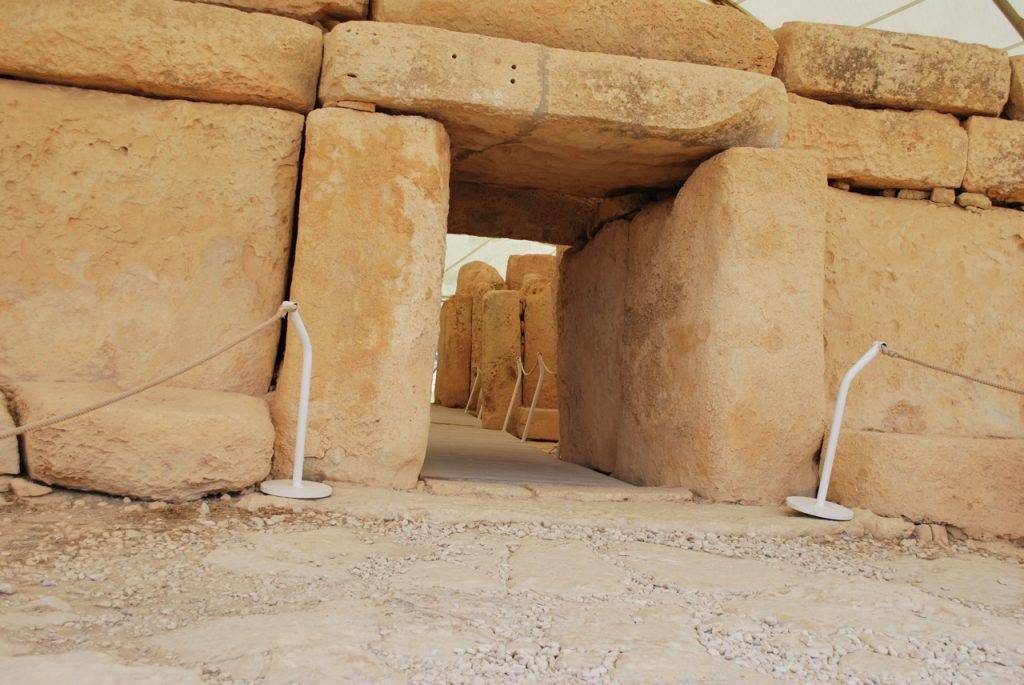Between 3600 BC and 700 BC, a series of prehistoric temples were built in the form of megalithic (large stone) constructions. The Hagar Qim temples of Malta are approximately 1000 years older than the pyramids of Egypt. This stone-age civilisation kept building more and more temples, and traces of 43 different temples can be found on the island. Visiting the ancient temples is one of my favourite things to do in Malta. I was lucky enough to visit Hagar Qim, one of the best-preserved prehistoric temple sites of Malta, and a UNESCO World Heritage Site.
The Prehistoric Hagar Qim Temples of Malta
There are 13 preserved megalithic temples of Malta built within this time period, 6 of which are recognised UNESCO World Heritage Sites. Ggantija on Gozo (two sites) are the oldest (built around 3600 BC) and were the first to be recognised as World Heritage Sites in 1980. In 1992, five other prehistoric temple sites of Malta were added: Ħaġar Qim, Mnajdra, Ta’ Ħaġrat, and Skorba Temples.
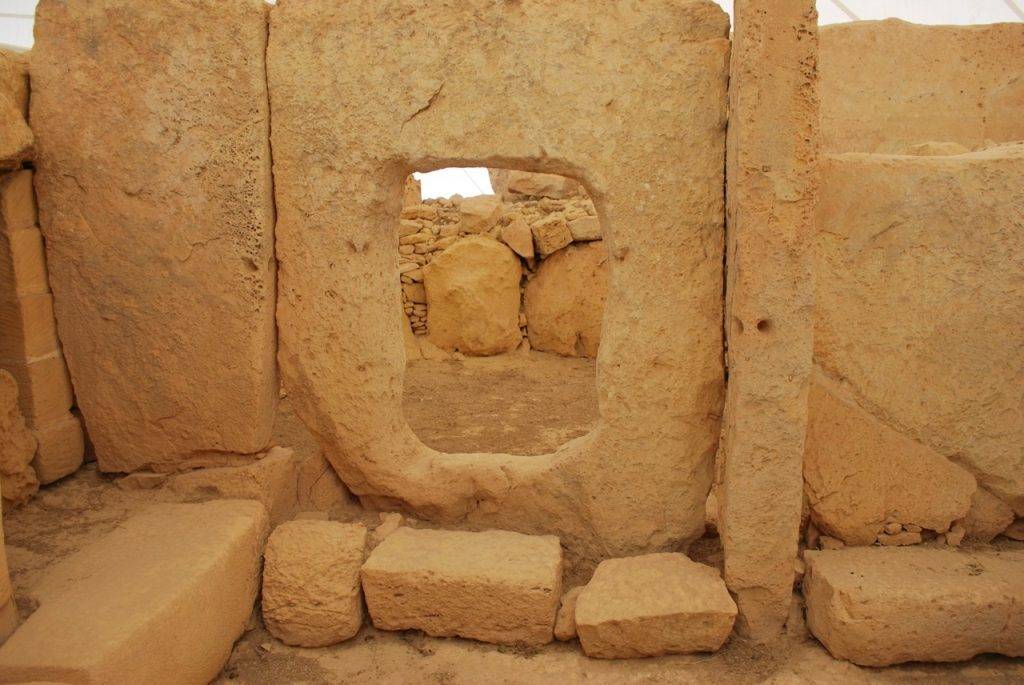
When was Hagar Qim Built?
As I have mentioned, the oldest temples of Malta (Ggantija on Gozo) were built in 3600 BC, and Hagar Qim was constructed approximately 300 years after that (based on Carbon dating). The name comes from the Maltese for boulders (Hagar) and the term ‘Qim’ meaning worship, or an archaic word meaning to stand.
Here’s a basic timeline of Prehistoric and Ancient Malta:
Neolithic – 5,000-4,100 BC
Temple Period – 4,100–2,500 BC
Bronze Age – 2,500–700 BC
The Calendar of Hagar Qim in Malta
Consider this – the 7000 year old culture that we are talking about already had a day and a night calendar. Hagar Qim was built in such a way to reflect this. The apses were covered with a dome and it was dark inside, but the corridors were in open air. The Hagar Qim temple complex was built facing South East and would light up stone block indicating beginning or end of the year. On 21 March and 21 Sept, the sun is exactly in the middle!
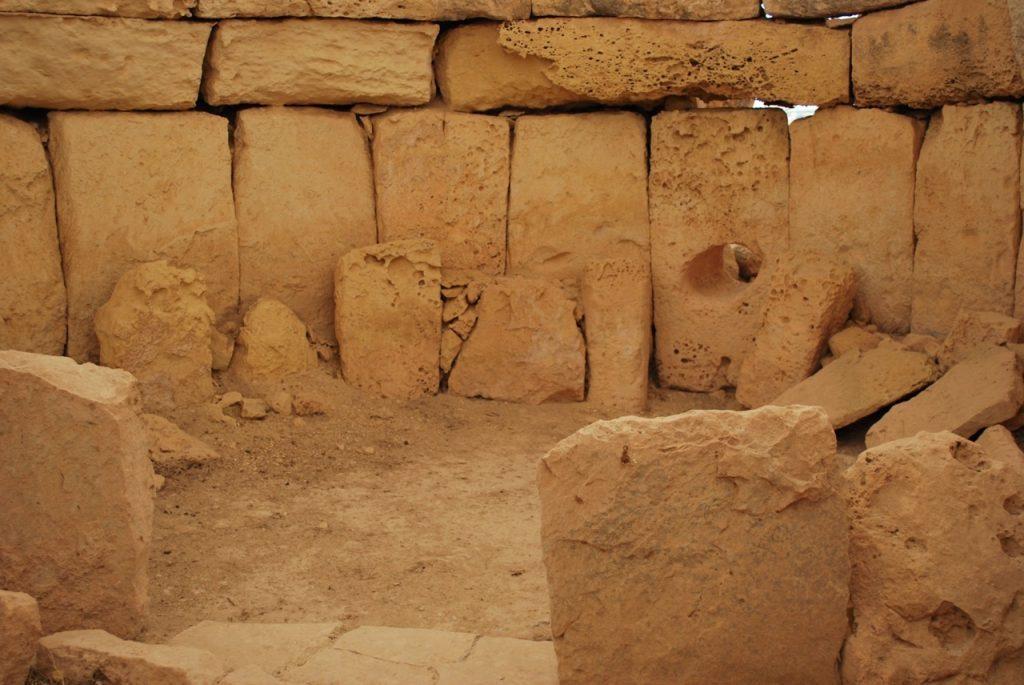
Groups of stars on the horizon were marked and they represented different days.
How about the months? It is 28 days between each full moon – they marked these and also marked the half moons and quarter moons.
This accurate prehistoric calendar could tell them months, days and seasons!
Who Built Hagar Qim and where did they come from?
Evidence suggests that these stone-age people came from Sicily and built Hagar Qim with their stone tools. For first 2000 years nothing very special happened to these people – they more or less lived in peace – they were not at war. Life was generally about farming and survival. However, the Hagar Qim temples were built for worship – they were not inhabited.
After this period they established the fertility culture – everything was in nature. The Nature God would change it’s outside body for something else. What is dead is absorbed by the earth – indicating their belief in the constant cycle of life and death. Animal sacrifices (not human!) took place here and the blood drained back into the earth. They buried their dead.
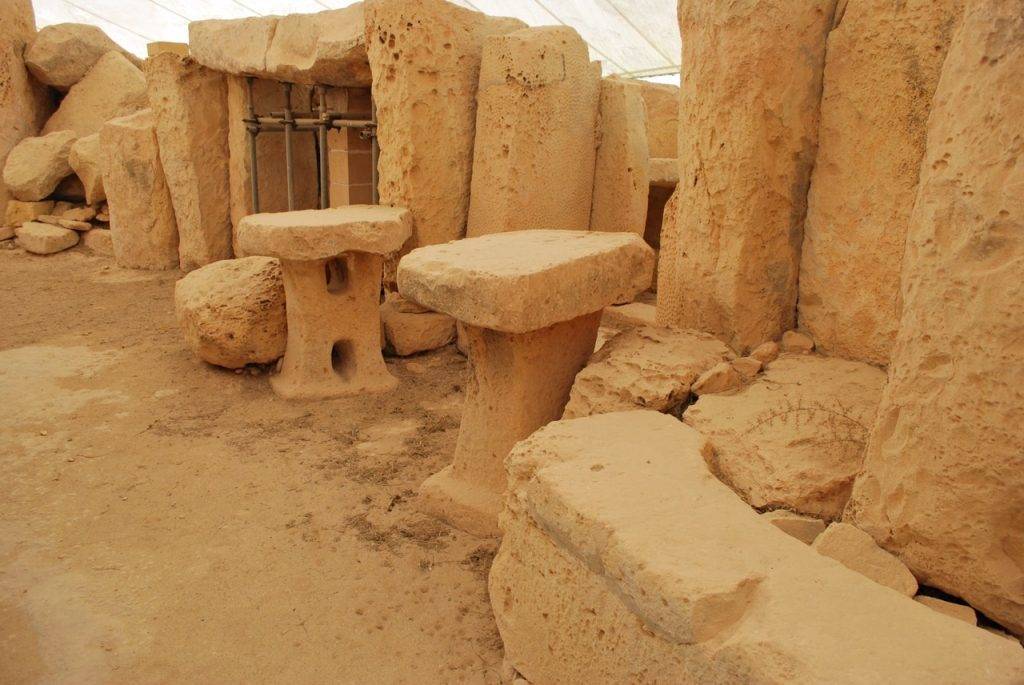
The statues (or statuettes!) discovered here were big – they believed that big meant more fertile (notice the wide hips and fat thighs!). The statues represent both sexes – male on the top and female on the bottom. Some of these obese figures can now also found at the National Museum of Archaeology in Valletta. The photo below shows the exact location where some of these statuettes were found.
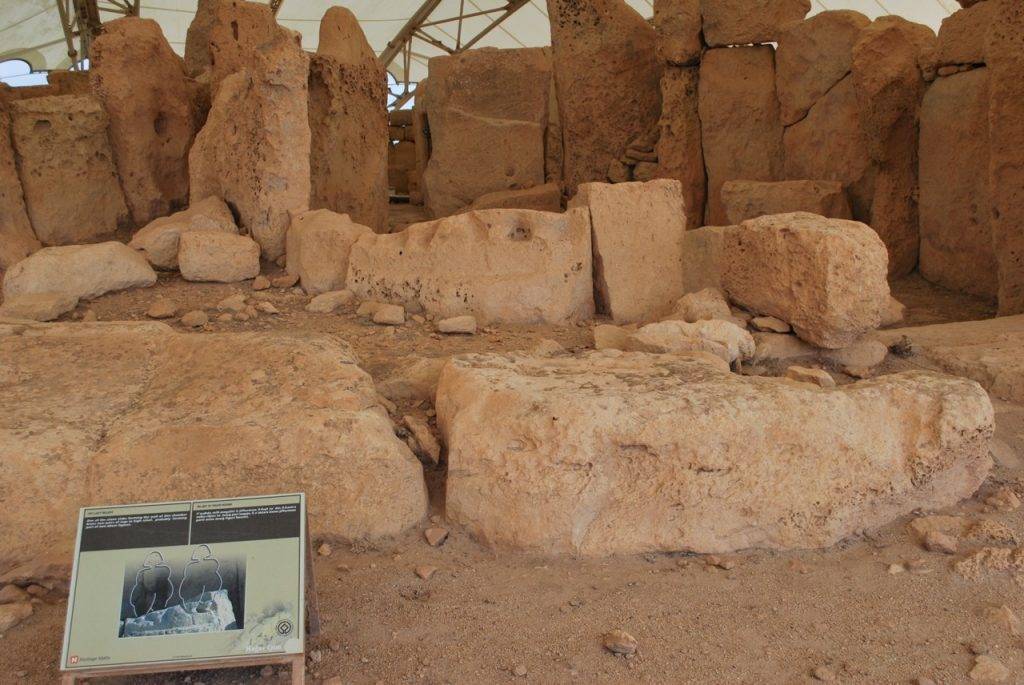
Abandoning of the Temple – 2000 BC
Around 2000 bc these people disappeared. Theoretically the island remained uninhabited for 1000 years – at the end of the Temple Period, the site was abandoned.
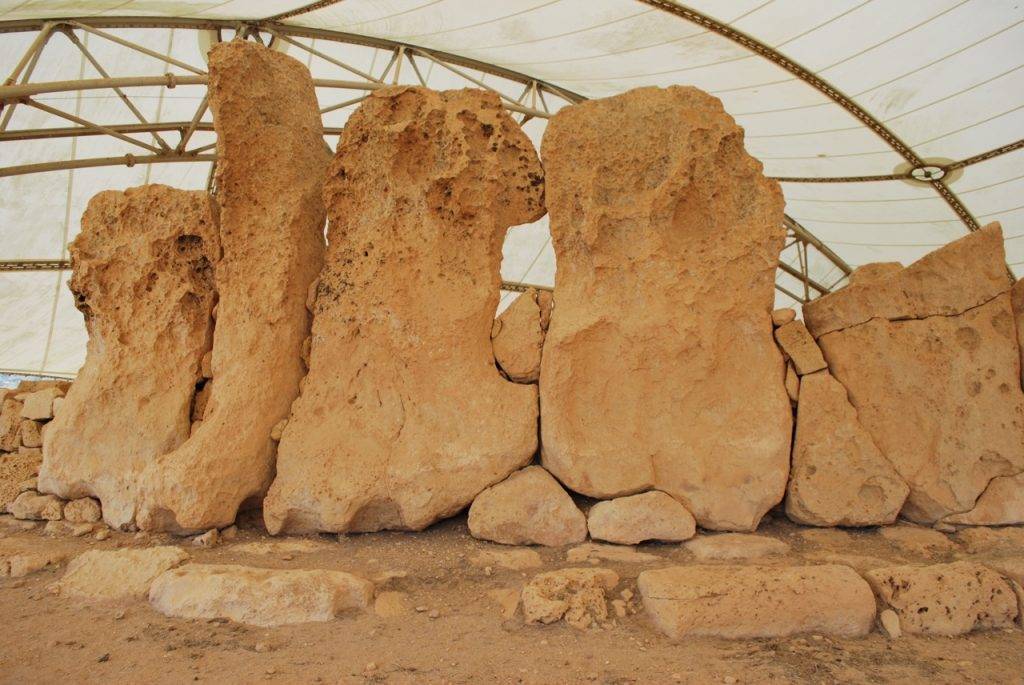
Recent Discovery and Preservation of Hagar Qim
In 1839AD, evidence of the temple was found. Further archaeological digs were conducted in 1885 when a number of statuettes and a limestone altar were discovered.
In 2009 AD, a shelter was put up to protect the site from the elements, and this is why the temple complex remains covered today.
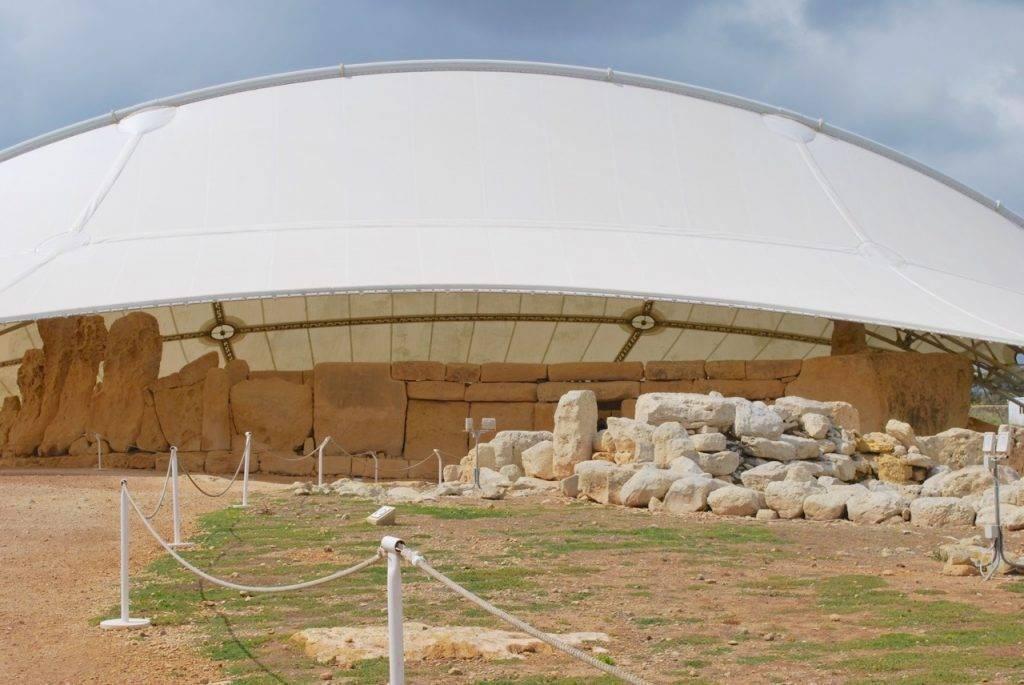
The Hypogeum
The next stone-age development after Hagar Qim was an underground temple in 800 BC called the Hypogeum. The walls of the Hypogeum were decorated with frescos. Skeletons found there were mainly female skeletons indicating a priestess hierarchy. The preistesses were buried in this sacred underground temple.
How to get to Hagar Qim Malta
Hagar Qim is around a half hour drive from Valetta. To visit by public transport, take bus 72 direct to Qrendi. It is approximately 25 minutes walk from the Qrendi bus station to Hagar Qim. If you want a guide along with convenient transport, you can book a tour including Hagar Qim and Mnajdra on Viator.
While you’re in Malta, be sure to also visit the Rotunda of Mosta.
What to pack for Malta
The time of year that you visit will have an impact on what you need to pack for Malta. If you visit in the winter time (October to March) then you need to pack a pair of jeans and a fleece as it can get chilly. Also a rainproof and windproof jacket will be necessary in the winter months.
[amazon table=”23160″]In the summertime, take light walking trousers and T-shirts. You might also like to pack some long comfortable dresses for the summer. Take suncream and aftersun if you are there in the hottest months (July and August).
[amazon table=”23436″]Whenever you travel, pack swimwear and walking boots as there are often swimming and hiking opportunities in Malta!
Further Reading on Malta
If you enjoyed this article on Hagar Qim Temples of Malta, you might also like to read about…
- Visit Gozo and Malta
- Top 10 Churches and Historical Sites in Malta
- Rotunda of Mosta – Worlds Third Largest Unsupported Dome Church
- The Silent City of Malta – Exploring the beauty of Mdina

